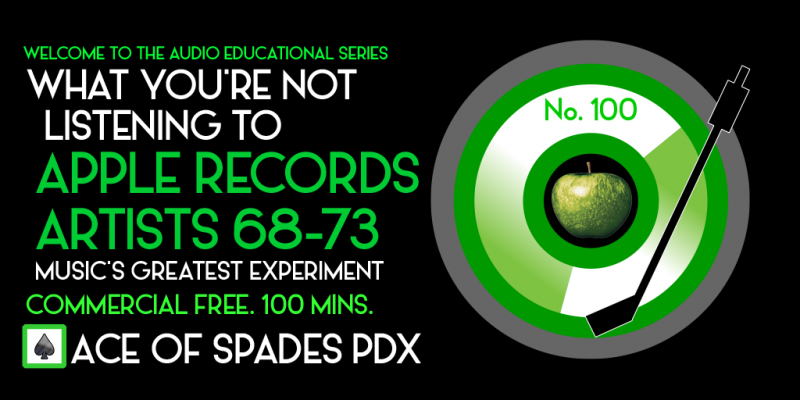Podcast: Play in new window | Download | Embed
For this series 100th program, a extended show dedicated to some of the many talented artists of music history’s most amazing experiment in the business, Apple Records, that started off with great promise but crashed and burned amid a bitter divorce among what were once close friends. #beatles #applerecords #apple
By 1967, The Beatles had seemingly done the impossible. The Fab Four, as the press dubbed them, John Lennon, Paul McCartney, George Harrison and Ringo Starr, hailed from a town no one had heard of or cared about called Liverpool, and after initially honing their craft in basement bars at home and strip joints overseas, were playing stadiums and had conquered the entertainment world with a series of popular films, highly rated television performances and record sales that dwarfed everyone else before them.
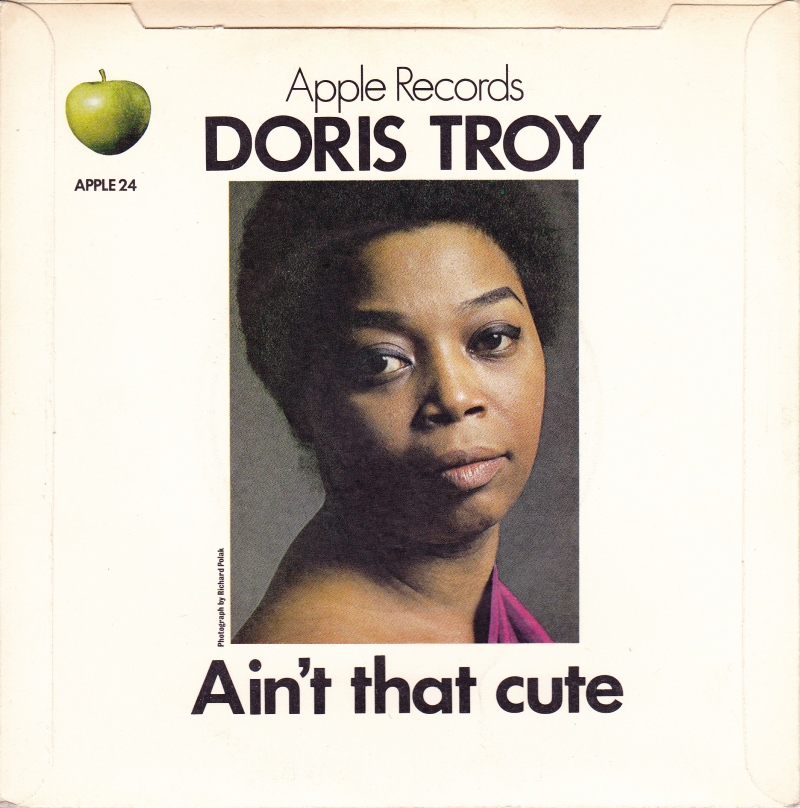
Their album that year, Sgt. Pepper’s Lonely Heart’s Club Band, would become the most studied and dissected piece of music of the 20th century. They were rich, young and seemingly a font of artistic brilliance with no shortage of ideas.
But what do you do will all of that money and fame when the tax man comes a-knocking? Brian Epstein, their manager, formed a corporation as a tax haven for the band, originally called Beatles Inc. in 1967 that would morph into what is still known today as Apple Corp. (Yes, the pun was intentional.) It was going to be diversified: electronics, films, a clothing boutique and most notably, a record label.
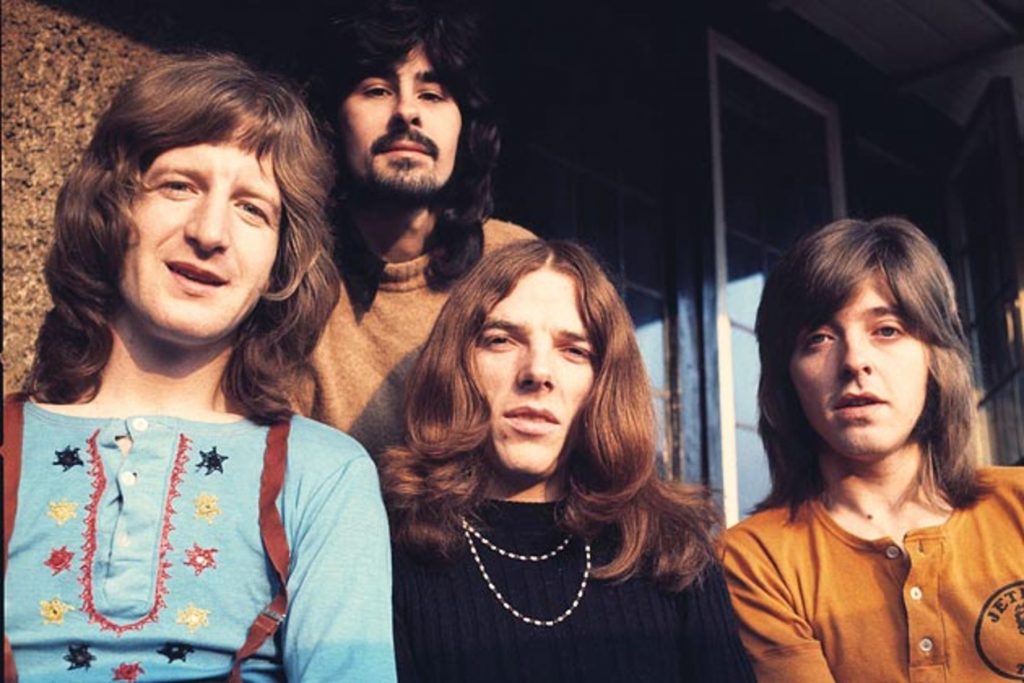
Epstein died during the Summer of Love, in August of 1967. A disastrous film in December of that year, Magical Mystery Tour, illustrated just how lost the band were without him, and they needed a win. By the time of the launch of the label almost a year later to the day of Epstein’s passing, it would turn out, in hindsight, that their former manager was the glue that somehow kept the four friends together and on task.
What wasn’t known to much of the outside world was just how badly and quickly the cracks between the members had become. The former Fab Four put on a good face for the press, but it was becoming obvious that things were not well in Pepperland. They would and did find, at least initially, a rare joy amidst all of the tumult by closely working with artists on their new label, since they had also stopped touring and, for the most part, working together. They would often act as producers, players and songwriters for many on their roster, some who were new and some veteran acts.

Though not the first vanity label (Reprise by Frank Sinatra, Tangerine by Ray Charles, Brother by The Beach Boys and Bizarre by Frank Zappa preceded them), where artists are often signed to their own imprint and fostered other talent they liked, Apple was above and beyond the most recognizable, and easily the one with the biggest ever roster that is self-owned by the lead artist, in spite of their brief recorded output.

They would also blow it quite often. The label didn’t have traditional talent scouts (in the early days, it was the members of The Beatles themselves who performed the bulk of this task), and at least one member of the band had to approve of any new signing. This led them to miss out on iconic acts such as Yes and David Bowie. A little more than three years after forming Apple, all but the film company and the record label had fallen into disarray or had closed altogether. Of course, the band also went through a very ugly, public and messy business divorce as well during this period.
This also caused a great deal of friction at the label. The band members were ready to leave it behind, but it would take until the mid-1970’s to sort it all out. Making matters worse, they also were unbelievably and completely broke by the beginning of the 1970’s, and had themselves ended up with an unscrupulous manger in Allen Klein, a man who eventually did time for lying to the Internal Revenue Service.

Not only were the Beatles unlucky in their post-Epstein business arrangement, they also were seemingly oblivious to how the music business, or any business venture for that matter, actually worked. They were adamant that their label would feature acts that were often at the cutting edge that other labels would not touch, an “artists” label, so to speak. But often times, when they were in the midst of such talent, they honestly didn’t know how to properly promote them to radio or market them to the public (Yoko Ono, Jackie Lomax) or assist them in sustaining careers (James Taylor, Billy Preston).
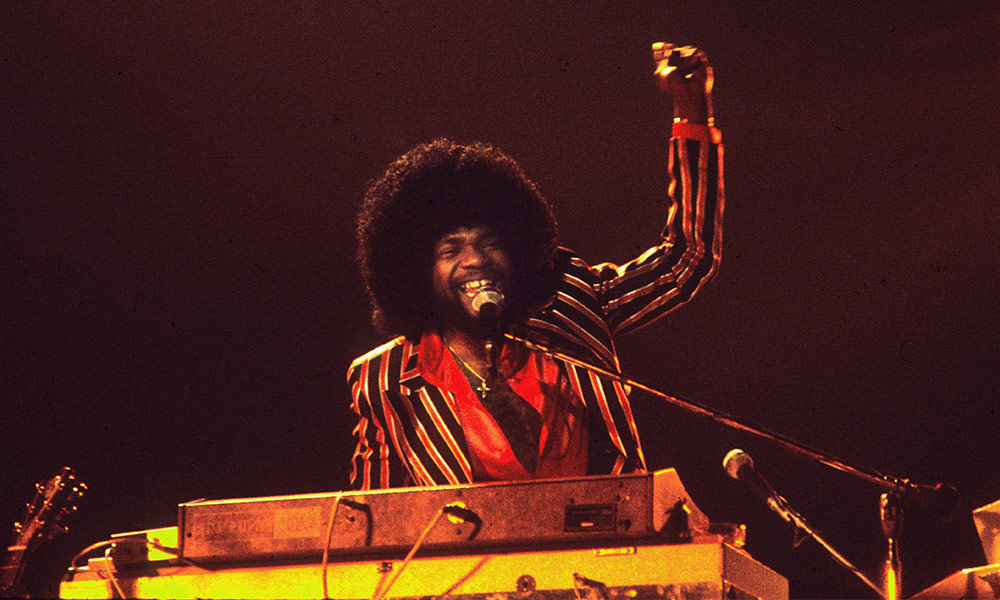
Klein shuttered an avant-garde subsidiary label, Zapple, after just two releases, which left several completed or planned albums, including a historical performance by Lenny Bruce, out to sea. Also closed was the electronics division, which had an incredibly expensive but poorly designed recording studio, as well as the boutique, which one day literally opened the doors and gave all the clothing away to anyone walking past it. It also seems that the many of the employees at the Apple offices were expensing large amounts of drugs, alcohol and food at the most expensive restaurants in London with no accountability or work to show for it.
The title of a 1973 book by Apple insider Richard DiLello says it all: The Longest Cocktail Party: An Insider’s Diary of the Beatles, Their Million-dollar Apple Empire and Its Wild Rise and Fall (ISBN 1-84195-602-3).
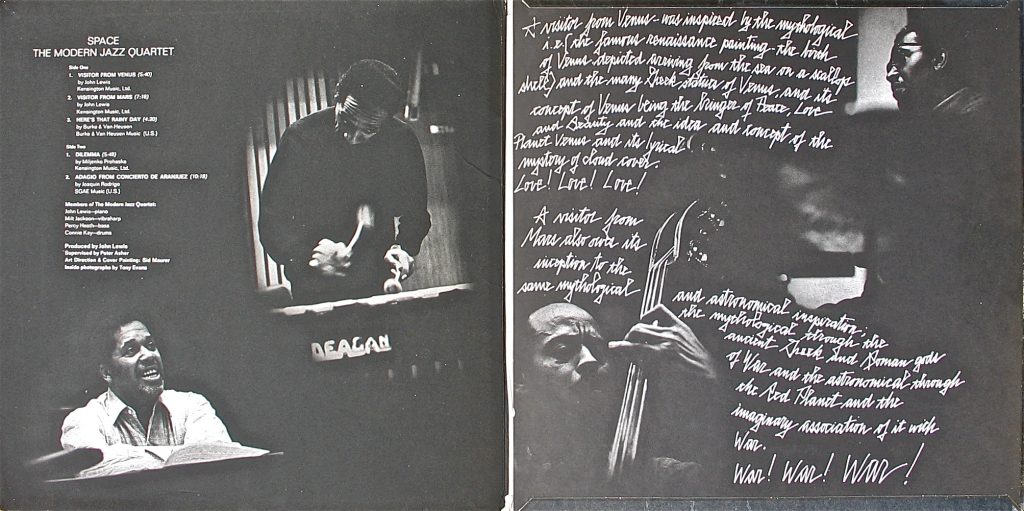
By 1973, Apple Records had ceased all operations with artists other than The Beatles individually or collectively, with the final release being Ass by Badfinger, the label’s biggest non-Fab Four act. Interestingly, George Harrison, Ringo Starr and Badfinger were actually outselling Paul McCartney and John Lennon for a while in the early 1970’s, the first three acts that were initially in the shadow of the latter two. The last Apple films at the time, Son of Dracula featuring Ringo Starr (no, FOR REAL) and then-popular singer Harry Nilsson, and festival favorite Little Malcom, starring future Alien actor John Hurt, both came and went in 1974 with little public notice.
The great experiment had failed miserably, and with it, the promise of what the 1960’s held also went with it for Apple. It would not become an artists label to anyone but the The Beatles again until the release of The Best of Badfinger in 1995 on CD.

Not all of the material originally released by Apple has been reissued in digital formats, with just a few holdouts, but much of it finally saw the light of day in 2011 which coincided with the documentary Strange Fruit: The Beatles’ Apple Records. Of course, the label once again didn’t know how to market most of it, and many of the physical titles quickly became out of print for a second time. Some of it was never to sport an Apple logo again, but was released by other labels.
Some people never learn. Some people are just not business savvy. And some are just in it for the music and the adventure; hopefully the latter two being why all of you are here. Just remember: you may not be ready for this, but here we go.
NOTE: There is language and subject matter that may not be suitable for all audiences.
First Part
- No Matter What, 1970, Badfinger, No Dice
- Sour Milk Sea, 1968, Jackie Lomax, Is this What You Want?
- Why, 1970, Yoko Ono, Plastic Ono Band
- Visitor From Mars, 1969, The Modern Jazz Quartet, Space
- Right Now, 1970, Billy Preston, Encouraging Words
- King of Fuh, 1969, Brute Force, single A-side
- Saturday Nite Special, 1972, The Sundown Playboys, single A-side (mono)
- Ain’t That Cute, 1970, Doris Troy, Doris Troy
- The Lady Is A Champ, 1968, Frank Sinatra, bootleg of Apple single #1
Second Part
- Try Some, Buy Some, 1970, Ronnie Spector, single A-side
- Trout Fishing In America: The Hunchback Trout, 1969, Richard Brautigan, Listening to Richard Brautigan (originally from the Zapple 3 LP, withdrawn and released as Harvest ST-424 in 1970 in the U.S. only) (vinyl rip)
- Liberation Special, 1972, Elephants Memory, Elephants Memory (vinyl rip)
- Knockin’ Around The Zoo, 1968, James Taylor, James Taylor
- The Whale (Part 1), 1970, John Tavener, The Whale
- Govinda, 1971, The Radha Krsna Temple , The Radha Krsna Temple
- We’re On Our Way, 1972, Chris Hodge, single A-side
- Thingumybob, 1968, Black Dyke Mills Band, single A-side
- F Is Not A Dirty Word, 1972, David Peel and The Lower East Side, The Pope Smokes Dope
Finale
- Those Were The Days, 1968, Mary Hopkin, U.K. single A-side and U.S. version on Post Card LP
Love to you all.
Ben “Daddy Ben Bear” Brown Jr.
Host, Show Producer, Webmaster, Audio Engineer, Researcher, Video Promo Producer and Writer
“Copyright Disclaimer Under Section 107 of the Copyright Act 1976, allowance is made for ‘fair use’ for purposes such as criticism, comment, news reporting, teaching, scholarship, and research. Fair use is a use permitted by copyright statute that might otherwise be infringing. Non-profit, educational or personal use tips the balance in favor of fair use.”
